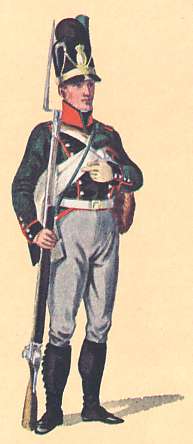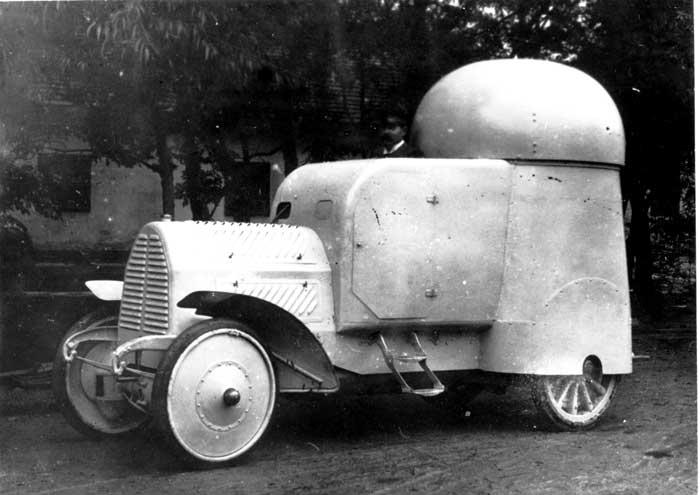|
Rapp Motorenwerke
Rapp Motorenwerke GmbH was a German aircraft engine manufacturer based in Munich, Bavaria. Founded in 1913, the firm changed its name in 1917 to Bayerische Motoren Werke GmbH (BMW). The company later became known as after its engine-production assets and the BMW name were transferred in 1922 to Bayerische Flugzeugwerke (formerly Otto Flugmaschinenfabrik), which was then renamed to Bayerische Motoren Werke AG and subsequently evolved into the automotive manufacturer known today as BMW. Early engines Karl Rapp and Julius Auspitzer founded Rapp Motorenwerke GmbH on 27 October 1913 with a capital stock of Reichsmark, RM 200,000. The company was established in Milbertshofen on the former site of the Munich branch of Flugwerk Deutschland GmbH, a firm at which Karl Rapp had held a leading position and that had gone into liquidation in the summer of 1913.Pierer. 2011. pp. 9–19 General Consul Auspitzer was the company's sole shareholder, with the operational side of the company man ... [...More Info...] [...Related Items...] OR: [Wikipedia] [Google] [Baidu] |
Gesellschaft Mit Beschränkter Haftung
A ''Gesellschaft mit beschränkter Haftung'' (, abbreviated GmbH and also GesmbH in Austria; ) is a type of legal entity common in Germany, Austria, Switzerland (where it is equivalent to a ''société à responsabilité limitée''), and Liechtenstein. It is an entity broadly equivalent to the private limited company in the United Kingdom and many Commonwealth countries, and the limited liability company (LLC) in the United States. The name of the GmbH form emphasizes the fact that the owners (''Gesellschafter'', also known as members) of the entity are not personally liable or credible for the company's debts. GmbHs are considered legal persons under German, Swiss, and Austrian law. Other variations include mbH (used when the term ''Gesellschaft'' is part of the company name itself), and gGmbH (''gemeinnützige'' GmbH) for non-profit companies. The GmbH has become the most common corporation form in Germany because the AG (''Aktiengesellschaft''), the other major company form ... [...More Info...] [...Related Items...] OR: [Wikipedia] [Google] [Baidu] |
Rapp 300 Hp , early 20th-century German aircraft engine manufacturer and predecessor to BMW
{{disambig ...
Rapp or RAPP may refer to: * Rapp (surname) *Rapp, West Virginia * HNoMS ''Rapp'', the name of several Norwegian navy ships * Russian Association of Proletarian Writers * Fort Rapp, a fort in France * Rapp Motorenwerke Rapp Motorenwerke GmbH was a German aircraft engine manufacturer based in Munich, Bavaria. Founded in 1913, the firm changed its name in 1917 to Bayerische Motoren Werke GmbH (BMW). The company later became known as after its engine-production a ... [...More Info...] [...Related Items...] OR: [Wikipedia] [Google] [Baidu] |
Aircraft Engine Daimler DM BMW IIIa Fokker D VII
An aircraft is a vehicle that is able to fly by gaining support from the air. It counters the force of gravity by using either static lift or by using the dynamic lift of an airfoil, or in a few cases the downward thrust from jet engines. Common examples of aircraft include airplanes, helicopters, airships (including blimps), gliders, paramotors, and hot air balloons. The human activity that surrounds aircraft is called ''aviation''. The science of aviation, including designing and building aircraft, is called ''aeronautics.'' Crewed aircraft are flown by an onboard pilot, but unmanned aerial vehicles may be remotely controlled or self-controlled by onboard computers. Aircraft may be classified by different criteria, such as lift type, aircraft propulsion, usage and others. History Flying model craft and stories of manned flight go back many centuries; however, the first manned ascent — and safe descent — in modern times took place by larger hot-air ball ... [...More Info...] [...Related Items...] OR: [Wikipedia] [Google] [Baidu] |
BMW IIIa
BMW IIIa was an inline six-cylinder SOHC valvetrain, water-cooled aircraft engine, the first-ever engine produced by Bayerische Flugzeugwerke AG, who, at the time, were exclusively an aircraft engine manufacturer. Its success laid the foundation for future BMW engine designs. It is best known as the powerplant of the Fokker D.VIIF, which outperformed any allied aircraft. Design and development On 20 May 1917, Rapp Motorenwerke (which later that year became BMW GmbH) registered the documentation for the construction design for the new engine, dubbed BMW III. Designed by Max Friz and based on the Rapp III engine, it was an SOHC in-line six-cylinder, just as the earlier Mercedes D.III was, which guaranteed optimum balance, therefore few, small vibrations. It was designed with a high (for the era) compression ratio of 6.4:1. The first design drawings were available in May, and on 17 September the engine was on the test rig. After a successful maiden flight for the IIIa in Decembe ... [...More Info...] [...Related Items...] OR: [Wikipedia] [Google] [Baidu] |
Max Friz
Max Friz (October 1, 1883 – June 9, 1966) was a German mechanical engineer specializing in engine design. He was the key contributor of engine design and innovation that led to the founding of Bayerische Motoren Werke AG (BMW) in 1917. Early life Assumed to be originally from Urach, very little is known about Friz' youth. It is known however, that at a young age, he apprenticed to the Kuhn steam engine company in Cannstatt starting in 1898. In 1902, he enrolled at the Royal Building Trade School in Stuttgart-Esslingen furthering his engineering skills. In 1906, he was employed by Daimler Motoren Gesellschaft, in the Design Office, making major contributions to the design of the racing engine for the 1914 Mercedes Grand Prix car that won the French Grand Prix. Friz designed the first practical German aircraft engines in 1912-1913 while at Austro-Daimler. The engines had separate cylinders on the crankcase and an overhead camshaft driven by a vertical shaft and bevel gears. ... [...More Info...] [...Related Items...] OR: [Wikipedia] [Google] [Baidu] |
Austro-Hungarian Army
The Austro-Hungarian Army (, literally "Ground Forces of the Austro-Hungarians"; , literally "Imperial and Royal Army") was the ground force of the Austro-Hungarian Dual Monarchy from 1867 to 1918. It was composed of three parts: the joint army (, "Common Army", recruited from all parts of the country), the Imperial Austrian Landwehr (recruited from Cisleithania), and the Royal Hungarian Honvéd (recruited from Transleithania). In the wake of fighting between the Austrian Empire and the Hungarian Kingdom and the two decades of uneasy co-existence following, Hungarian soldiers served either in mixed units or were stationed away from Hungarian areas. With the Austro-Hungarian Compromise of 1867 the new tripartite army was brought into being. It existed until the disestablishment of the Austro-Hungarian Empire following World War I in 1918. The joint "Imperial and Royal Army" ( or ''k.u.k.'') units were generally poorly trained and had very limited access to new equipment bec ... [...More Info...] [...Related Items...] OR: [Wikipedia] [Google] [Baidu] |
Bavarian Army
The Bavarian Army was the army of the Electorate (1682–1806) and then Kingdom (1806–1919) of Bavaria. It existed from 1682 as the standing army of Bavaria until the merger of the military sovereignty (''Wehrhoheit'') of Bavaria into that of the German State in 1919. The Bavarian Army was never comparable to the armies of the Great Powers of the 19th century, but it did provide the Wittelsbach dynasty with sufficient scope of action, in the context of effective alliance politics, to transform Bavaria from a territorially-disjointed small state to the second-largest state of the German Empire after Prussia. History 1682–1790: From the first standing army to the Napoleonic Wars The '' Reichskriegsverfassung'' of 1681 obliged Bavaria to provide troops for the Imperial army. Moreover, the establishment of a standing army was increasingly seen as a sign of nation-statehood and an important tool of absolutist power-politics. At a field camp in Schwabing on 12 October 1682, the n ... [...More Info...] [...Related Items...] OR: [Wikipedia] [Google] [Baidu] |
Austro-Daimler
Austro-Daimler was an Austro-Hungarian automaker company, from 1899 until 1934. It was a subsidiary of the German ''Daimler-Motoren-Gesellschaft'' (DMG) until 1909. Early history In 1890, Eduard Bierenz was appointed as Austrian retailer. The company sold so well that it also began manufacturing the automobiles after uniting with Eduard Fischer's engineering factory. The works were located at Wiener-Neustadt. By this subsidiary ''DMG'' became the first automotive multinational in history. Thus on August 11, 1899, the Austrian Daimler Engine Society was founded. Whilst the assembling parts stemmed from Stuttgart, in 1900 they built their first automobile which featured 2 cylinders, , and 4 seats. Soon they started producing engines for luxurious cars, trucks, buses, maritime ships, and trains. Paul Daimler era In 1902, Paul Daimler, Gottlieb Daimler's son, took charge of the Technical Department. He developed a compact car (8 hp, 45 km/h). In 1905 he built the company ... [...More Info...] [...Related Items...] OR: [Wikipedia] [Google] [Baidu] |
Franz Josef Popp
Franz Josef Popp (14 January 1886 in Vienna – 29 July 1954 in Stuttgart) was one of three men responsible for the founding of BMW AG and the First General Director of BMW AG from 1922 to 1942. A number of different candidates have been put forward as the “founders” of BMW AG. In the absence of Karl Rapp, Gustav Otto, Max Friz or Camillo Castiglioni the company would probably never have been born. However, Franz Josef Popp can lay claim to being the prime force in the development of the mobility company we know today. He was “General Director” of the company from its foundation until he was forced to relinquish his position in 1942. Early years Popp was born in Vienna in 1886 and in 1901 his family moved to Brno where he completed his university entrance qualification at the local grammar school. He went on to study mechanical and electrical engineering at the local Technical College and qualified with a degree in engineering in 1909. When he returned to Vienna, ... [...More Info...] [...Related Items...] OR: [Wikipedia] [Google] [Baidu] |
Prussian Army
The Royal Prussian Army (1701–1919, german: Königlich Preußische Armee) served as the army of the Kingdom of Prussia. It became vital to the development of Brandenburg-Prussia as a European power. The Prussian Army had its roots in the core mercenary forces of Brandenburg during the Thirty Years' War of 1618–1648. Elector Frederick William developed it into a viable standing army, while King Frederick William I of Prussia dramatically increased its size and improved its doctrines. King Frederick the Great, a formidable battle commander, led the disciplined Prussian troops to victory during the 18th-century Silesian Wars and greatly increased the prestige of the Kingdom of Prussia. The army had become outdated by the beginning of the Napoleonic Wars, and France defeated Prussia in the War of the Fourth Coalition in 1806. However, under the leadership of Gerhard von Scharnhorst, Prussian reformers began modernizing the Prussian Army, which contributed greatly to the defea ... [...More Info...] [...Related Items...] OR: [Wikipedia] [Google] [Baidu] |
Basse Und Selve
Basse und Selve (BuS) were German manufacturers of engines for automobiles, motorcycles, boats, aircraft and railcars, supplying engines for ''Selve'' cars built at the Selve Automobilwerke AG, but also various other manufacturers of automobiles and commercial vehicles, such as Beckmann, Mannesmann, and Heim. The Altena factory was founded in 1908 by Gustav Selve, employing 2,000 workers, with Dr. Walther von Selve taking over the firm on the death of Gustav Selve, his father. Basse und Selve aero-engines did not make a big impact on the aviation industry in Germany, but did find limited use, particularly in several large aircraft. The largest and most powerful fighter fitted with a Basse & Selve engine was the Hansa-Brandenburg W.34, a single prototype of which was completed before hostilities ceased in 1918. Several large ''Riesenflugzeuge'' were also fitted with Basse & Selve engines, but they were generally replaced with Mercedes or Maybach alternatives as soon as possible ... [...More Info...] [...Related Items...] OR: [Wikipedia] [Google] [Baidu] |





